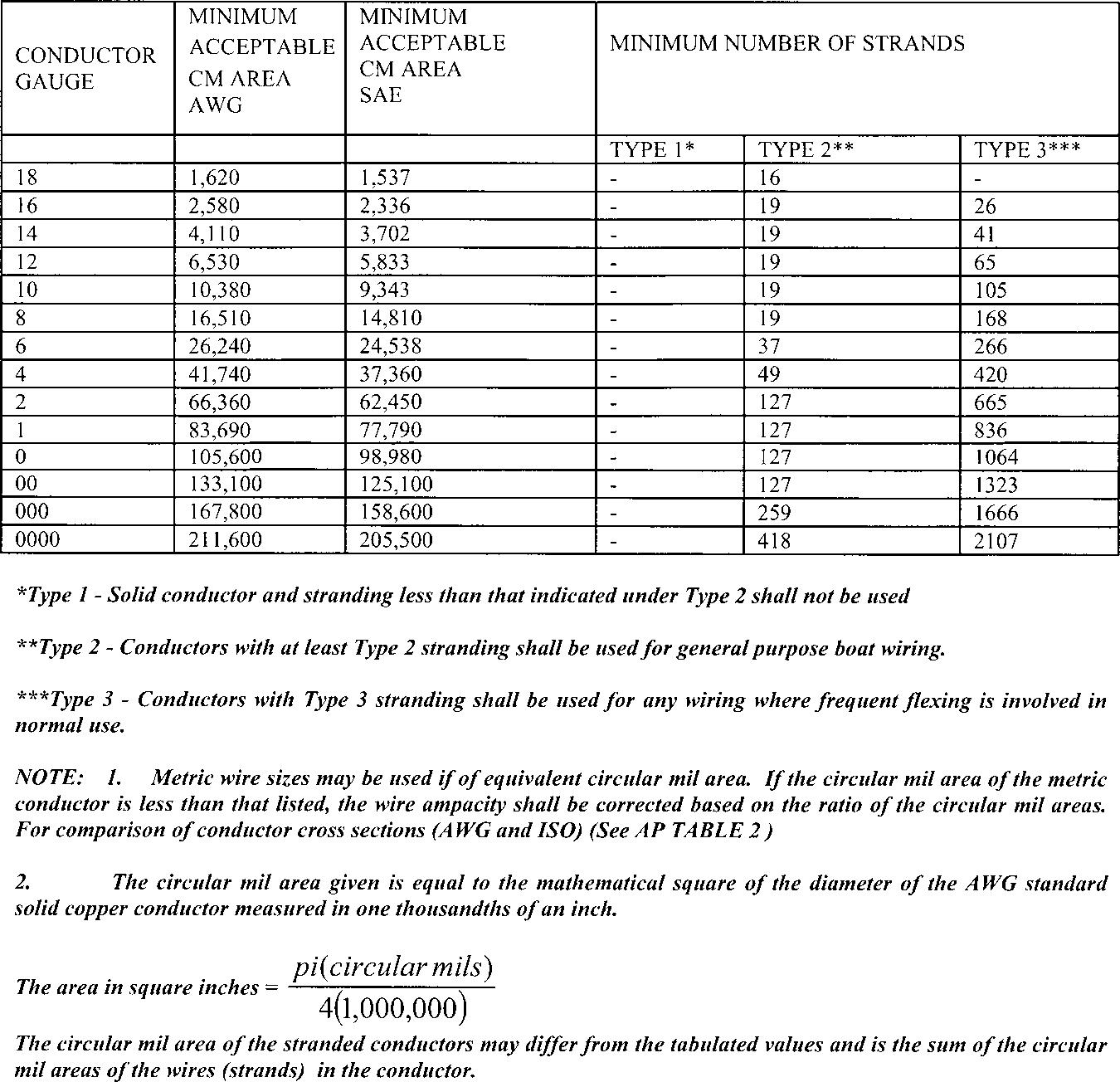
2 minute read
Wire Size
diameter than the equivalent SAE designation. Stick to AWG-rated wires, prefereably those marked “boat cable” on the insulation.
As the wire-gauge numbers get smaller, the wire gets progressively bigger in diameter, and the minimum circular cross-sectional area of the wire, indicated by circular mils (CM), gets larger. Next, the chart shows the minimum number of strands for both Type 2 and Type 3 wire. The finer the strands, the more strands there are in a wire of a given size and the more flexible the wire will be. It’s easy to identify the two wire types, because Type 3 wire has a lot more strands than Type 2. For example, an AWG
Advertisement
10-gauge Type 2 wire will contain 19 strands of wire, whereas an AWG 10-gauge Type 3 wire will have 105 strands. Type 3 wire will also have a slightly lower resistance for a given gauge than a Type 2 wire. Once you have determined the type of wire to use on your project (and in nearly all cases this will be Type 3 tinned copper wire), you must decide which size. Important considerations here are the length of the wire, the voltage (usually 12 volts, but if your boat is over 35 feet long you might have a 24-volt system), and the amperage the circuit is expected to carry (sometimes called ampacity). This information is usually supplied by manufacturers of the equipment you intend to install on the circuit. If it isn’t contained in the Fig. 4-1. Table XII from the ABYC electrical standards, section E-11, comparing wire instruction manual or printed on types and stranding. (© ABYC) the side of the equipment itself, you may have to perform the following test to determine what these values are. To test for amperage, connect the equipment you want to test to your boat’s battery (or any 12-volt battery) with a set of automotive jumper cables. Hook the positive lead to the battery first and the negative lead next. Be careful not to let the clamps at the other end of the cables touch and arc. Next, set up your multimeter to measure DC amps. When you’re uncertain of the amount of current a piece of equipment will require, it’s best to perform this check with your meter’s 10- or 20-amp setup. An over reading on the wrong scale (with the meter’s leads in the incorrect sockets) will blow the meter’s




